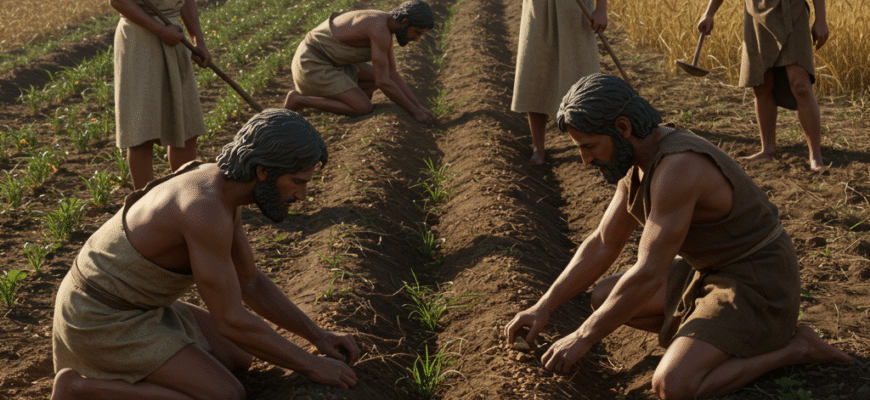Content
Whispers of Change: Why Start Farming?
The question of why humans abandoned a nomadic lifestyle they had perfected over eons for the back-breaking labor of farming remains a subject of debate among archaeologists and historians. There likely isn’t a single answer, but rather a convergence of factors that nudged different groups towards cultivation. One prominent theory points to climate change. As the last Ice Age drew to a close, warming temperatures and changing rainfall patterns altered ecosystems. Large game animals populations shifted or dwindled in some areas, while certain wild grasses and plants flourished, potentially becoming more attractive food sources. Another factor could be population pressure. As hunter-gatherer groups became more efficient or perhaps simply experienced natural growth, the available wild resources in certain areas might have become strained. This could have encouraged groups to find ways to increase the yield of reliable food sources in a smaller territory, making plant cultivation an appealing, if initially laborious, alternative. Some researchers also suggest that a deeper understanding of plant life cycles, perhaps gained through generations of gathering, eventually led to deliberate attempts to propagate desirable species closer to settlements. It’s also possible that agriculture began almost accidentally. Perhaps discarded seeds near campsites sprouted, or stored nuts and grains were observed growing. Over time, people might have started intentionally saving seeds from the most productive or tastiest plants, clearing competing vegetation, and eventually actively tilling soil and diverting water. It was likely a slow, incremental process, with early “farmers” still relying heavily on hunting and gathering while gradually increasing their dependence on cultivated crops.Cradles of Cultivation: Where Did It Begin?
Remarkably, agriculture didn’t just spring up in one place and spread. It emerged independently in several regions around the world, each focusing on the local flora available. The Fertile Crescent: This arc of land stretching from the Nile Valley through the Levant and into Mesopotamia is often considered the earliest major center. Around 11,000-10,000 years ago, people here began cultivating wild grasses like emmer wheat, einkorn wheat, and barley. Lentils, peas, chickpeas, and flax soon followed. The domestication of animals like goats, sheep, pigs, and cattle also occurred relatively early in this region, providing not just meat but also milk, wool, and eventually, draft power. East Asia: Along the Yangtze and Yellow River valleys in China, agriculture developed with a different set of crops. Around 9,000 years ago, communities began cultivating rice, a staple that would sustain vast populations. Further north, millet was domesticated around the same period. Soybeans and pigs were also crucial parts of early East Asian agriculture. The Americas: Development here followed its own unique trajectory. In Mesoamerica (present-day Mexico and Central America), the domestication of maize (corn) from its wild ancestor, teosinte, began perhaps as early as 9,000 years ago, though it took thousands of years for it to become a highly productive staple. Beans and squash were domesticated alongside maize, forming the “Three Sisters” agricultural system that provided a balanced diet. In the Andes region of South America, potatoes and quinoa were key domesticates, along with llamas and alpacas for transport, wool, and meat. Other Regions: Independent centers also emerged in New Guinea (taro, bananas, sugarcane) and potentially Sub-Saharan Africa (sorghum, yams) and the eastern United States (sunflowers, squash), although the timelines and specifics in some of these areas are still being actively researched.It’s crucial to understand that agriculture wasn’t a singular invention spreading from one source. Evidence strongly indicates that humans began cultivating plants and domesticating animals independently in multiple regions across the globe. These centers included the Fertile Crescent, East Asia, Mesoamerica, the Andes, and possibly others. Each region focused on the unique set of plants and animals available locally.









